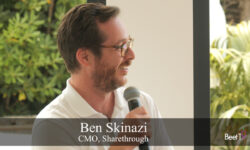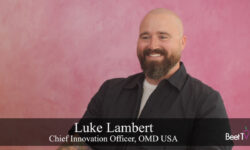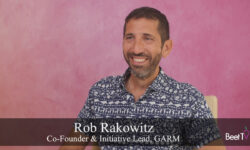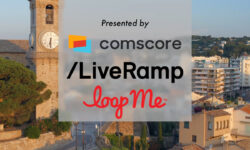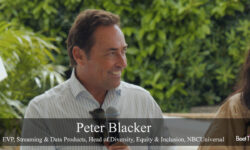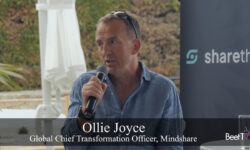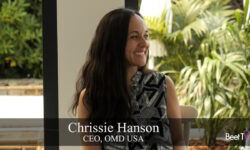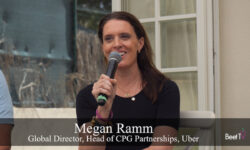CANNES – Measuring people’s attention to advertising in the past few years has become a bigger part of helping marketers to shape their campaign strategies.
“When we think about attention, it came from our original desire to show an improvement in the way we harness our clients’ dollars to do better outcomes,” Chrissie Hanson, chief executive of Omnicom’s OMD USA, said in this interview with Jonathan Steuer, cofounder and chief executive of Anonymous Media Research.
OMD started with gaze analysis that determines where a viewer is looking based on their eye movements and facial features. Its testing included about two dozen markets and 15 different product categories to better understand how attention is related to business outcomes.
“Let’s start with looking at the ad — have you seen it or not? That seems like a reasonable starting point,” Hanson said. “The positive results across two major categories and two major clients in the US, gave us that confidence to continue the testing that we did, and therefore the operationalizing of attention within our end-to-end process.”
OMD last year launched its Attention Requirement Calculator (ARC) to include attention metrics in media planning. Some kinds of products such as pharmaceuticals have detailed explanations about symptoms and side effects that require longer viewer attention to be more effective.
“We begin by understanding not only the brief, but then what is the attention requirement,” Hanson said, “and then we from there construct what is the right contact, what’s the frequency, what’s the right construct, the size and shape of the ad. What’s the right context and frankly, how much attention is required for the plan?”
You are watching “The Transformation Of Television: Connected, Addressable & Outcome-Based,” presented by Go Addressable & Teads at the Cannes Lions International Festival of Creativity. For more videos from Beet.TV’s Cannes Lions 2023 coverage, please visit this page.








